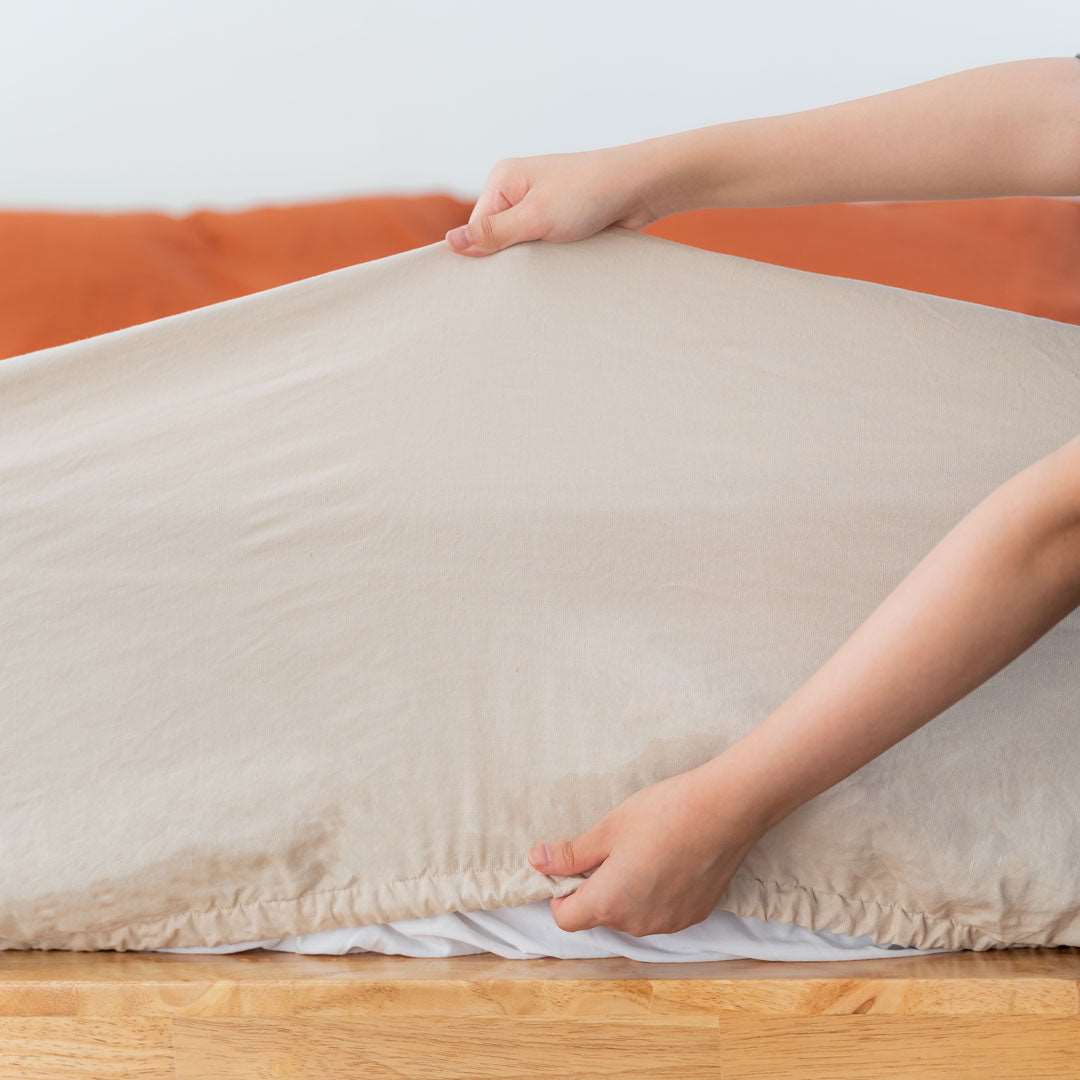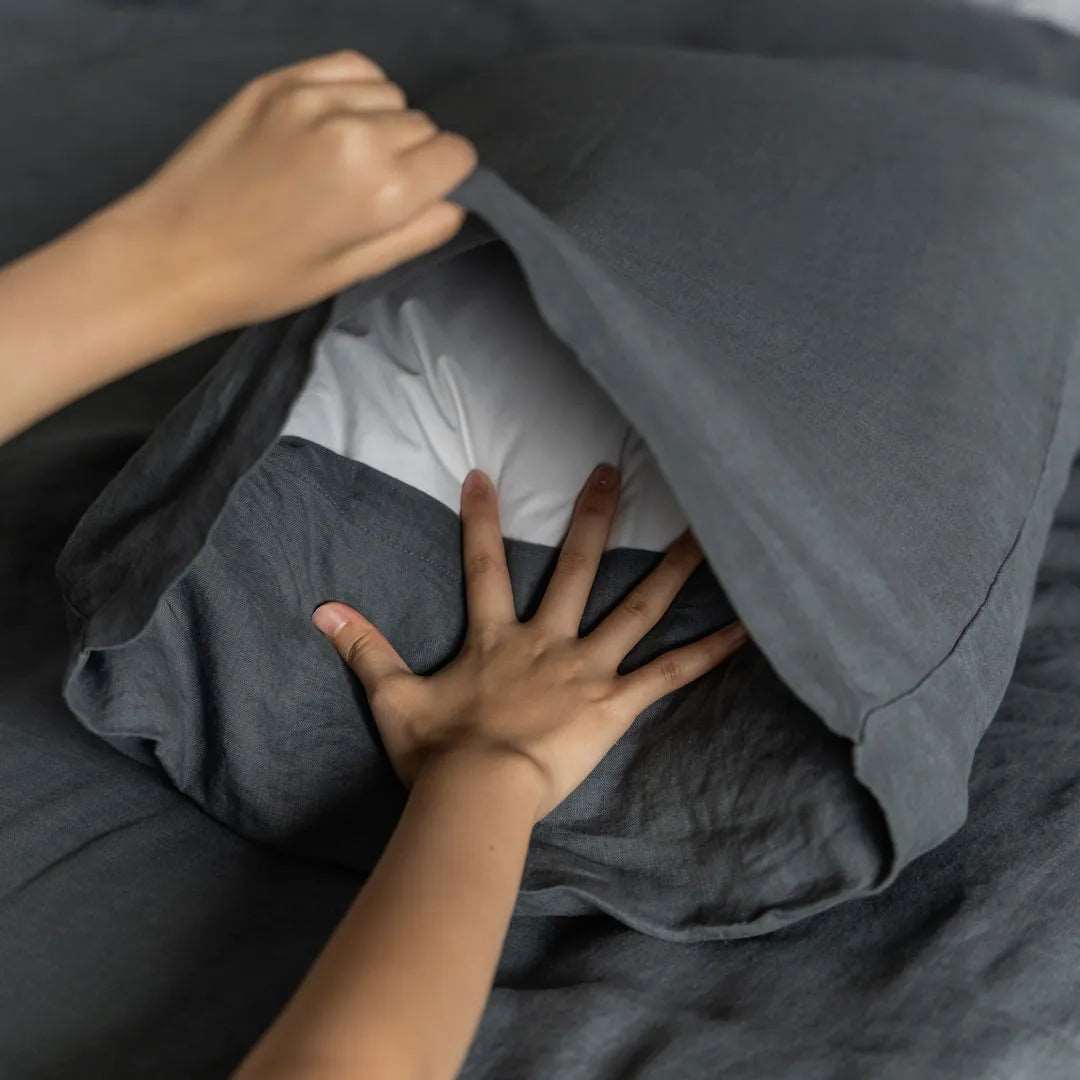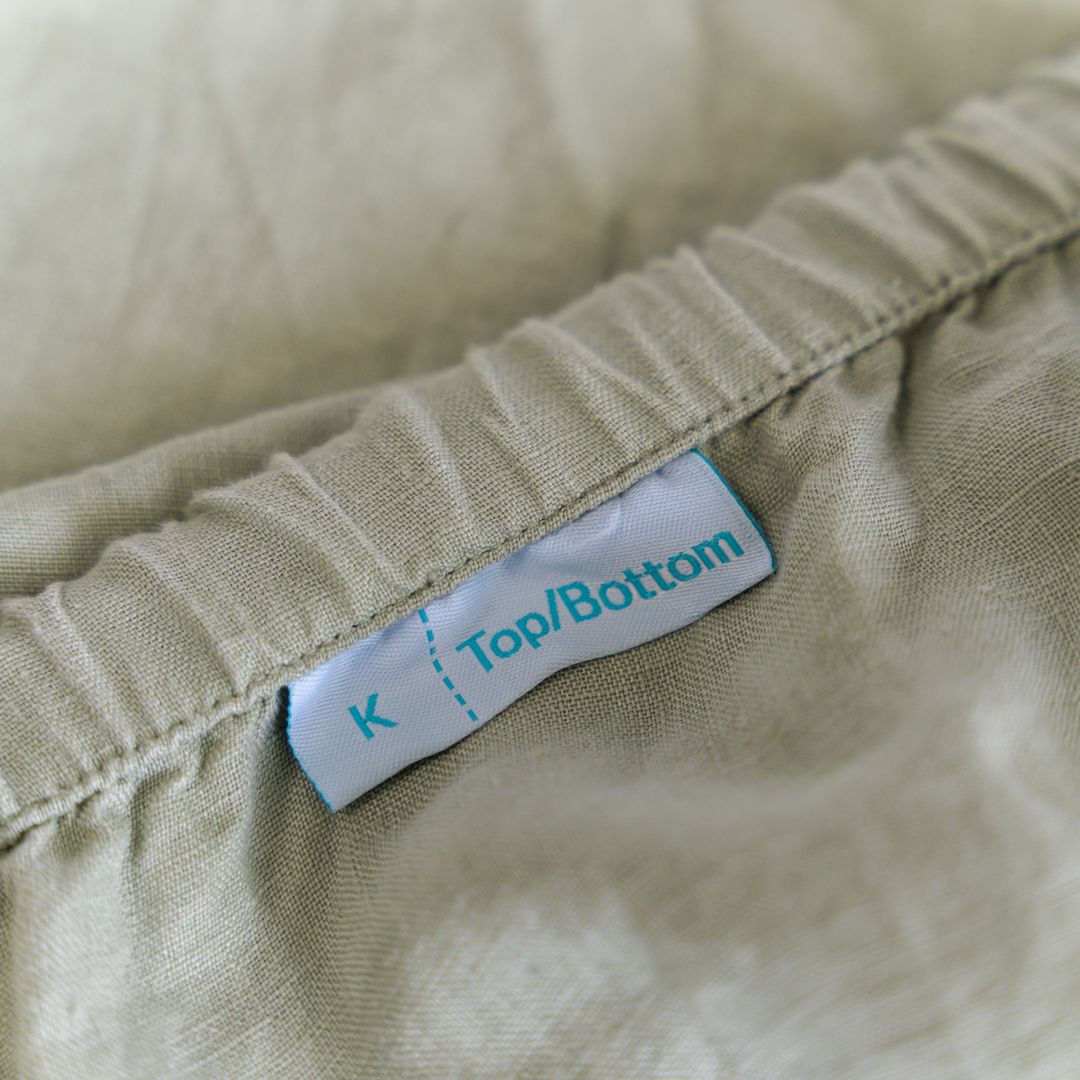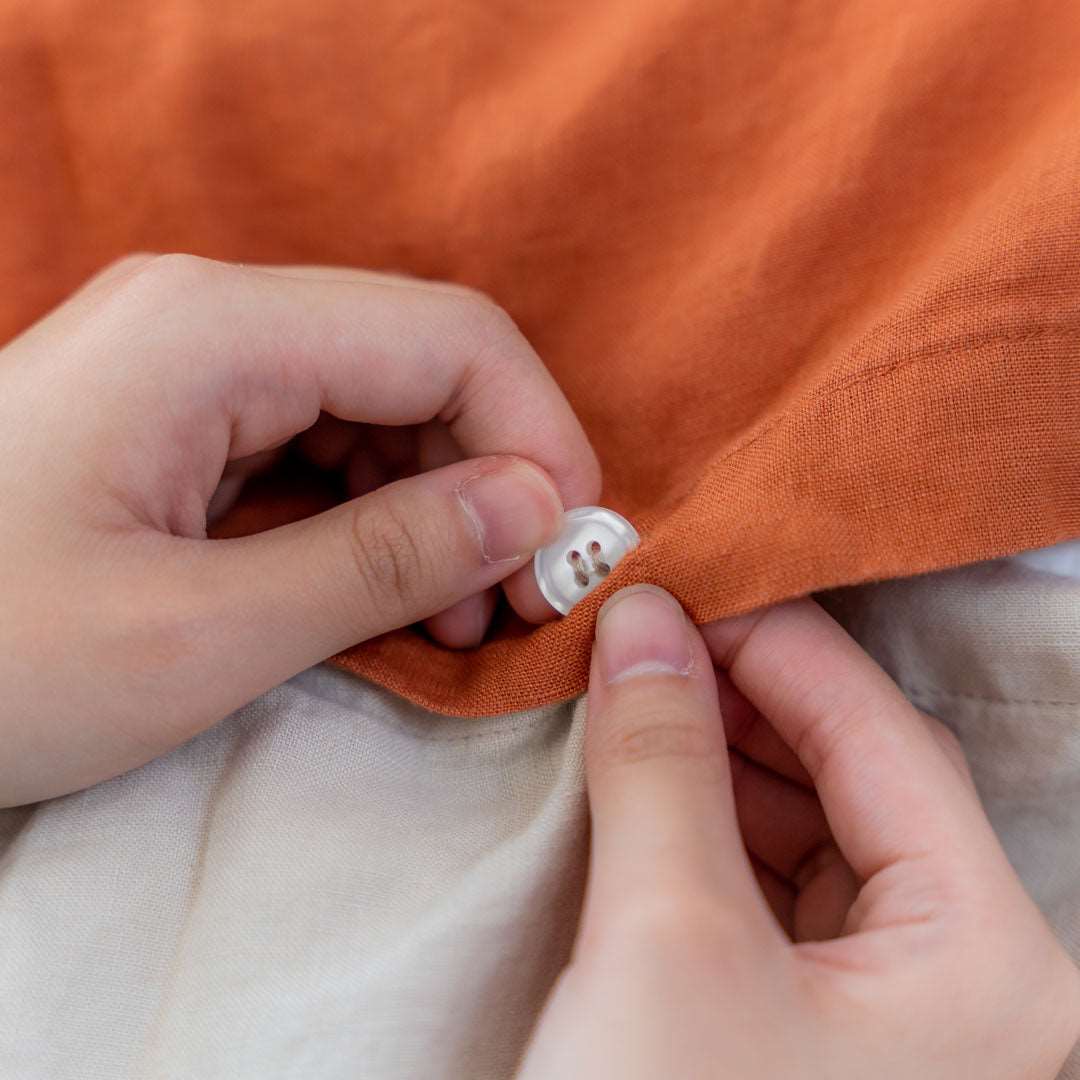
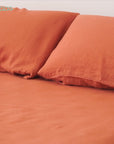
























100% French flax linen pillowcase (x2)

- Made of 100% stone-washed European flax linen at 165gsm
- Generously sized at 50cm x 75cm and 50cm x 91cm
- 20cm depth to keep pillows snug throughout the night
- Provides a textured lived-in look while still remaining soft and comfortable
- Super breathable - even more breathable than cotton
Fitted sheets:
- SK – 202cm x 202cm x 43cm
- KP / King Plus (IKEA or European size) – 183cm x 202cm x 43cm
- K – 183cm x 193cm x 43cm
- QP / Queen Plus (IKEA or European size) – 153cm x 202cm x 43cm
- Q – 153cm x 193cm x 43cm
- SS– 110cm x 193cm x 35cm
- SP/ Single Plus (IKEA or European size) – 92cm x 202cm x 35cm
- S – 94cm x 193cm x 35cm
Pillowcases:
- Standard pillowcase– 50cm x 75cm
- Gentle machine wash
- Tumble dry on low heat
- Do not bleach,and if your linen happens to stain, launder immediately
- Free shipping on orders more than S$50 to Singapore, RM150 to West Malaysia and RM300 to East Malaysia
- 30 days easy returns
- Shipped next business day
Click here to compare our bedsheets
Why you'll love Kapas' French flax linen bedsheets
100% French flax linen
Extremely strong natural fibers
French flax linen is known for its durability, and is considered to be one of the strongest natural fibers known to man.
Made from 100% French flax linen, our Kapas Linen collection is stronger than even our cotton collection, making it extremely durable and can last you a lifetime.
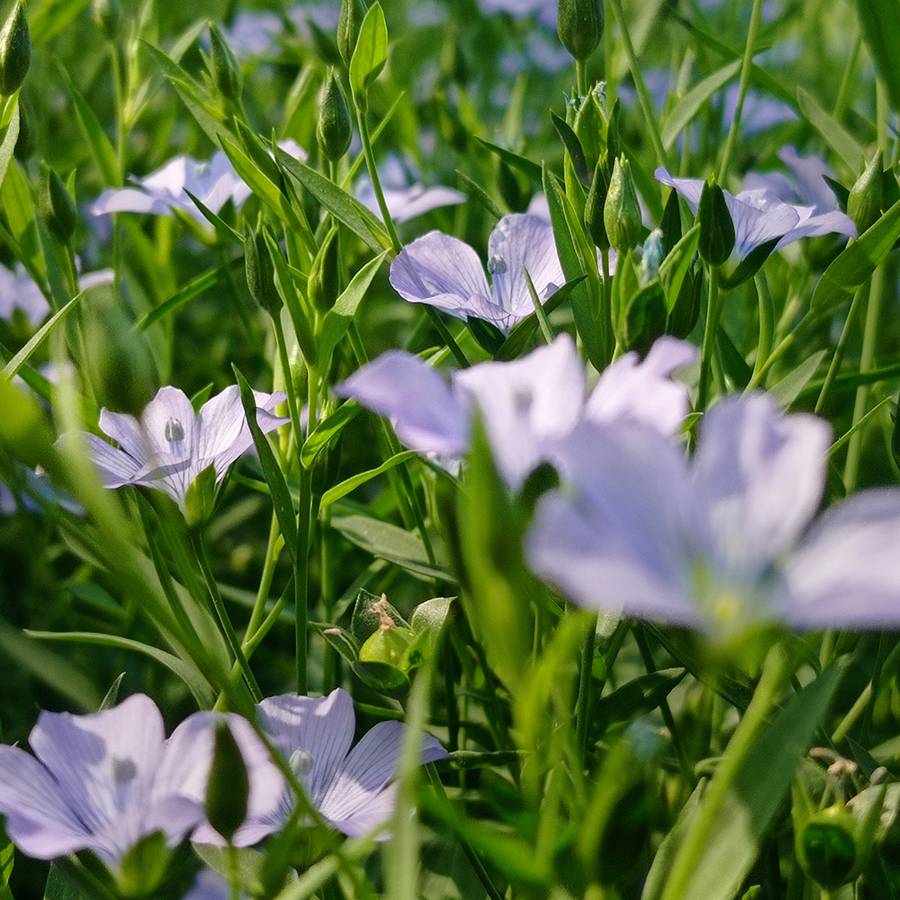
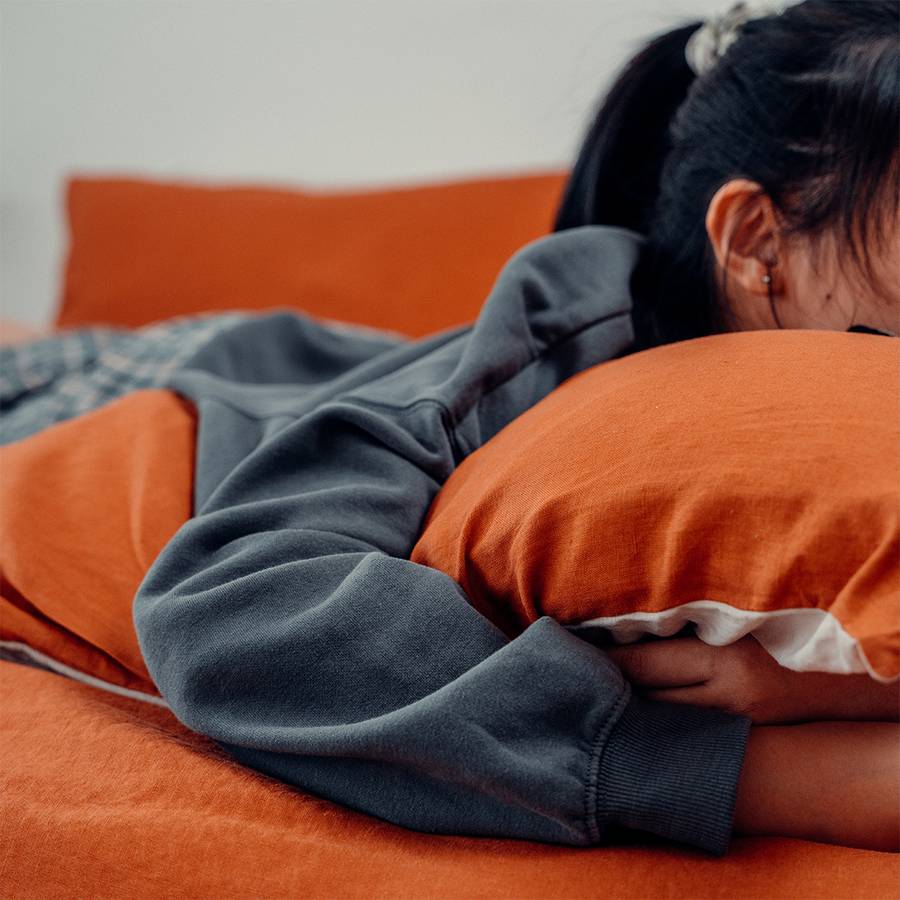
Stone washed for softness
Soft, breathable and hypoallergenic
Our Kapas French linen collection is soft without being silky, very breathable and extremely absorbent. It also has the benefit of being naturally hypoallergenic.
With the ability to thermoregulate, our linen will keep you cool in the summer but warm on those cold rainy nights.
Relaxed comfort
Get the laid back style you've been dreaming of
French linen has a distinctive texture that gives it a unique and elegant look. The natural imperfections in the fabric add to its character and charm.
Choose from our nine different neutral colours to create that lived-in look!
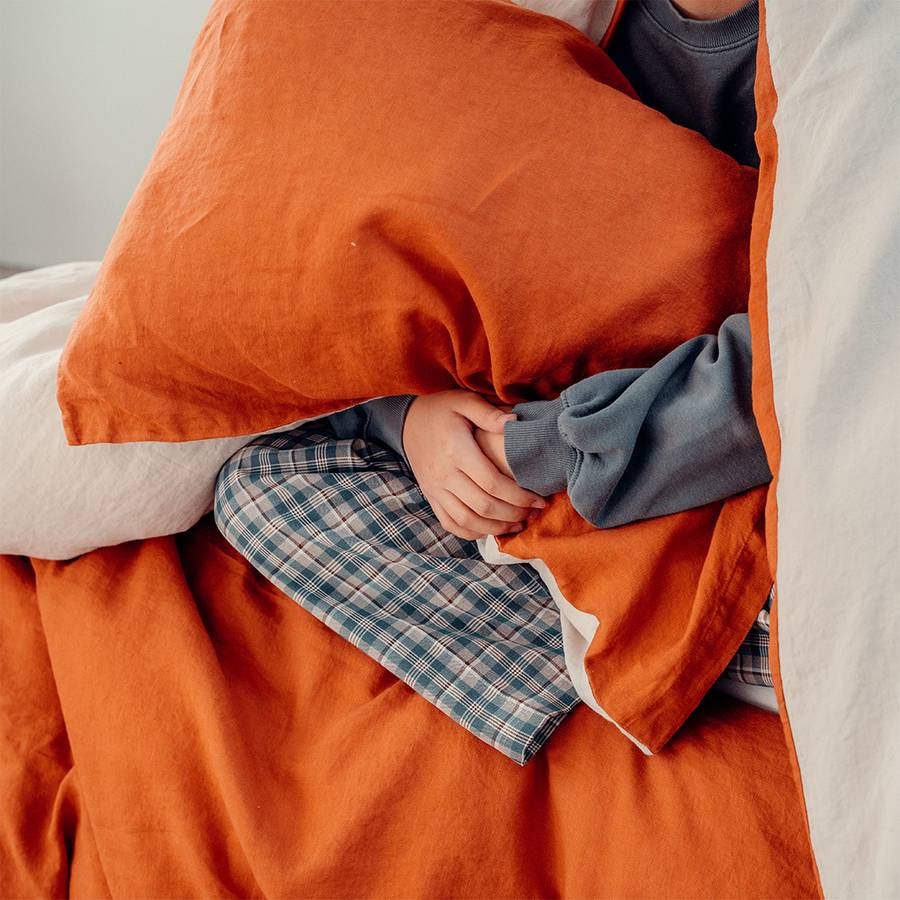
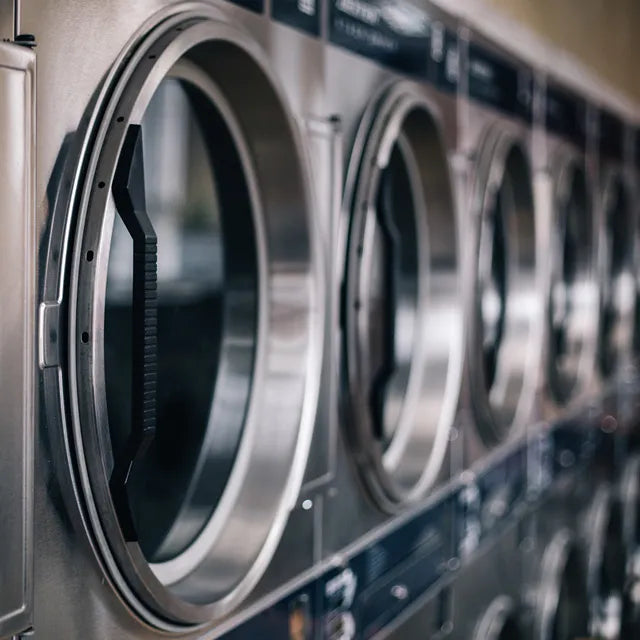
Machine washable and dryer safe
Easy to care for
French linen becomes softer with each wash. Gentle machine wash with a netting for less than 40minutes.
Stop ironing your sheets and get that relaxed vibe without even trying!
Brilliantly designed for Southeast Asia
After months of research and development – our designs are uniquely practical and stylish. Incorporating international designs and innovation, you’ll find yourself falling in love with our Kapas sheets over and over again
FAQs (Bedding)
Single/ super single sizes go up to 35cm. The other sizes have up to 43cm sheets.
Our sheets come with thick garters and fit mattresses from 10cm to 40cm well.
- Linen bedsheets should be machine washed (gentle or delicate mode) in cool to warm water that’s less than 40°C with like colours and fabrics.
- Ideally, the sheets should be placed in a netting bag as well and should be washed for less than 40 minutes.
- Use only a small amount of good quality detergent (usually around half of the recommended detergent amount).
- Avoid using fabric softeners and chlorine bleach.
- It is recommended you line-dry your sheets in a shady area.
Wrinkles only occur minimally as long as you remove the sheets from the washing machine or dryer immediately. Do not let bedding sit in the machines as this will cause the wrinkles to set.
The wrinkles that occur naturally is part of linen's charm.
Linen shedding is part of the life cycle of linen fibre. It means that your linen is just getting softer and softer, and therefore cosier and cosier to sleep in.
Linen is a fibre that softens and gets smoother over time, and it does so by shedding excess and unnecessary fibres.
These fibres exist in linen for a variety of reasons, but primarily because of the dye colours.
Though shedding can occur with all sheets and linen products, as a general rule of thumb, the darker the dye the more shedding that will occur.
This is because the dyes that are darker can lead to a greater buildup of fibres in the linen.
It's important to understand that shedding is perfectly normal and will often resolve itself after a few washes.
To expedite this, give your new sheets a few extra cold washes, allowing the fabric to shed excess fibers swiftly and transform into that heavenly, soft-to-the-touch material.
After these initial washes, you'll likely notice a significant improvement in your sheets. If shedding persists, don't fret – be patient. Typically, after a couple more wash cycles, the shedding will naturally cease.
These are called slubs. These occur naturally in linen and are not considered a flaw in the sheet. These slubs are generally embraced and are a part of linen's charm.
Bedding upgrades
Pairs well with
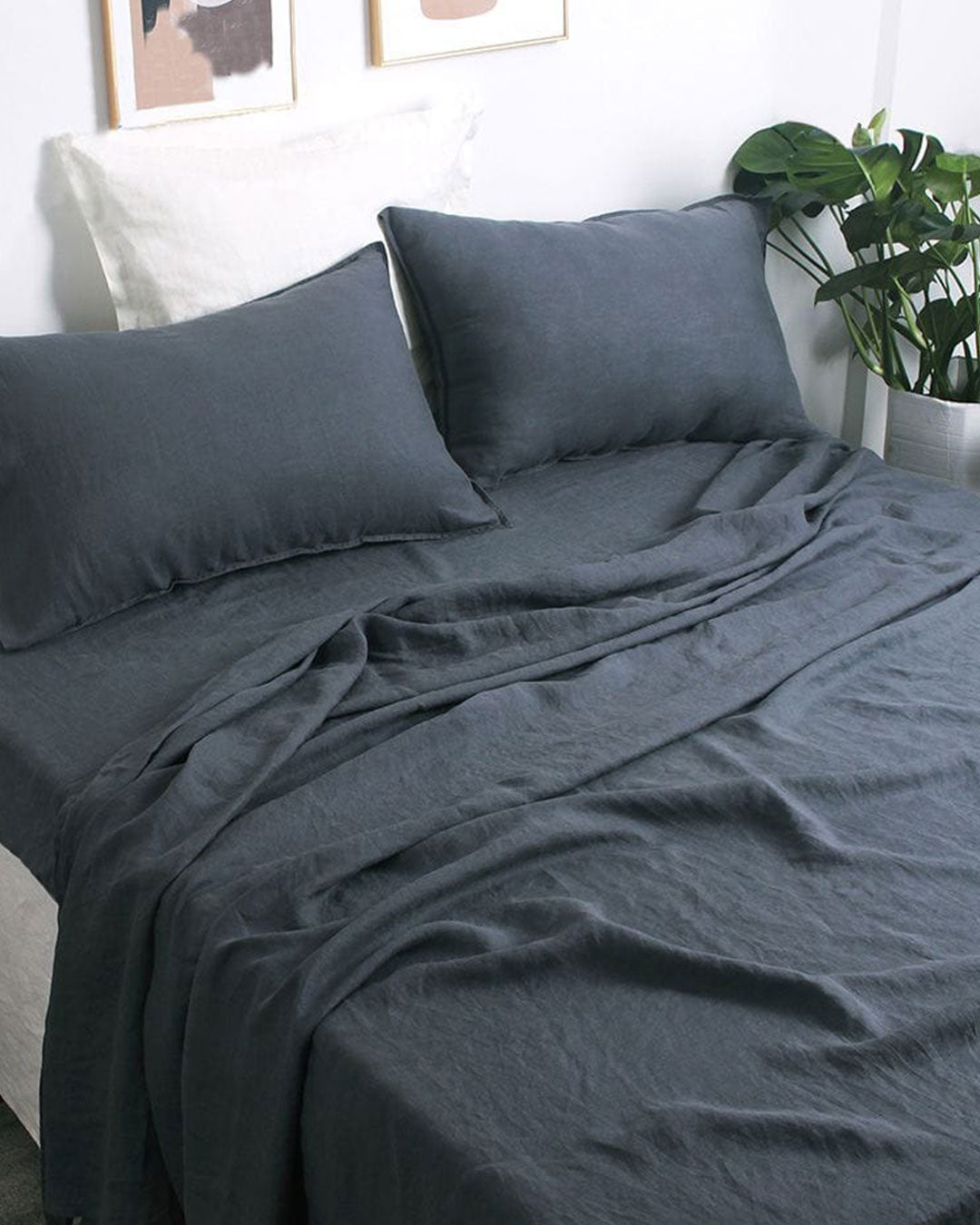
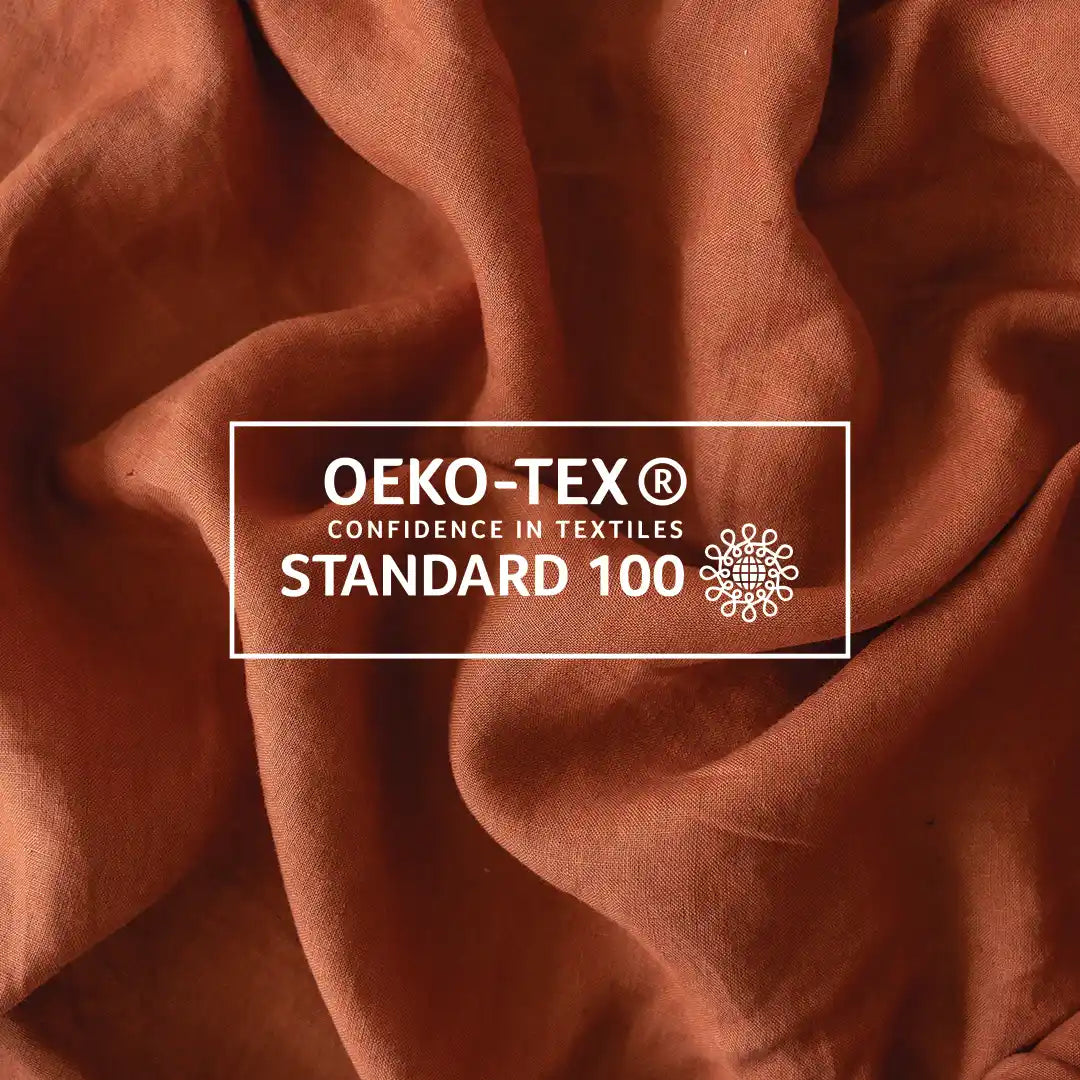
THE SUSTAINABLE CHOICE
OEKO-TEX® & European Flax® certified
Our Kapas Linen bedsheets are both OEKO-TEX® certified and European Flax® certified, meaning that they are free from all harmful substances and made from original European Flax linen.
OEKO-Tex® is a globally recognised third-party institution independent from the manufacturers of the fabric which certifies that textiles are free from harmful substances.
We ensure to only create products that are safe for both you and your loved ones.


























